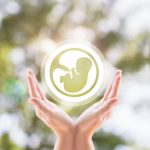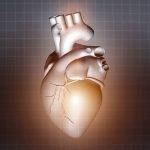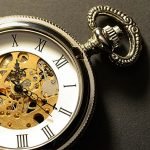Mind-Body Medicine
Nimrod Sheinman, BSc, ND
Paul Epstein, ND
* Used by permission. Excerpt adapted from chapter in: The Foundations of Naturopathic Medicine – The Healing Power of Nature.
Every drugless practitioner needs a working knowledge of Mental Science. The vital organs and functions of the body depend on the nerves for healthy action; the nerves are controlled by the brain, glands, solar plexus and subconscious mind; all of which are made strong or weak, healthy or sickly, normal or abnormal, by the character of our thoughts, emotions and expectations.
(Lust, 1921)1
The traditional naturopathic texts of the past emphasized psychological, mental, emotional, and spiritual states as crucial elements in the healing process. They instructed the practitioner to work with “mental therapeutics” and “psychological exercises,” in order to normalize and energize the functions of the body, remove the underlying cause of disease, and to influence the inflow and distribution of the vital force. The modern version of this approach is the clinical field of Mind-Body Medicine.
Definition of Mind-Body Medicine
Mind-Body Medicine (MBM) harnesses the connection between one’s psychology, biology and biography and focuses on transforming stress, pain and illness into processes of self-awareness, self-discovery, self-regulation, and mind-body healing. MBM emphasizes that one’s life experiences, beliefs, attitudes, mental and emotional dimensions, personality, character, and psychosocial and transpersonal aspects are just as important as one’s medical measures, molecules and genes. MBM asserts that one’s mind can either hinder or enhance the healing process:
Mind and body are inextricably linked, and their second-by-second interaction exerts a profound influence upon health and illness, life and death. Attitudes, beliefs and emotional states ranging from love and compassion to fear and anger can trigger chain reactions that affect blood chemistry, heart rate, and the activity of every cell and organ system in the body – from the stomach and gastrointestinal tract to the immune system.
(Pelletier, 1977)2
Mind-Body Medicine as a Modality
As a modality of naturopathic medicine, MBM encompasses a philosophy of care, a body of research, therapeutic principles and strategies, and a specific range of mind-body-based processes and techniques. It embodies unique educational and counseling components, an array of self-practiced skills, and an emphasis on the physician’s presence and qualities of being. Its transformative potential is enhanced by its focus on person-centered care, relationship-centered care, illness as an opportunity, and enhanced conscious awareness.
MBM directs special attention to patients’ subjective experiences: thoughts, feelings, sensations, beliefs, memories, images, and coping resources. MBM’s assessments look for underlying mind-body factors that may contribute to the dis-ease process and/or hinder the healing process, such as adverse stressful life events, unconscious roles, difficult emotions, habitual protective mechanisms, false beliefs, or lack of meaning and purpose in life. MBM’s therapeutic interventions cultivate mind-body awareness, strengthen mind-body skills, enhance intrinsic healing capacity, and empower the naturopathic visions of Vis Medicatrix Naturae and “healing from within.”
Psychoneuroimmunology research supporting MBM,3-5 coupled with the emerging science underpinning the placebo effect,6,7 provide clear evidence that mental activity, techniques, and practices have a recognizable and direct influence on the body.7-9
As a modality, MBM can be practiced independently or can be integrated to complement and enhance other modalities. Its unique sensitivity to inner exploration, deep listening, empathic inquiry, compassionate silence, and unconditional presence make it a unique asset in any clinical encounter, and an important ingredient in establishing an optimal healing environment.
Purpose of Mind-Body Medicine
The purpose of MBM is to tap the mental, emotional, behavioral, psychosocial, and spiritual dimensions of an individual, in order to restore and enhance one’s health, awareness, and wholeness. The role of therapy is to guide the patient in accessing his or her inner life – thoughts, feelings, images, beliefs, attitudes, memories, and hopes – and to use methods designed to reinforce self-regulation, awareness, insights, and self-healing.
From the traditional nature-cure perspective, MBM relates to the mental, emotional and moral “planes of being” (a term coined by Lindlahr). The vital force, understood to direct the natural self-healing response of the organism, can be accessed and influenced via different planes10: via the physical plane (as in diet, detox or hydrotherapy), via the energetic plane (as in homeopathy or acupuncture), and via the mental, emotional, and moral plane (as emphasized in MBM).
Most mind-body skills and techniques have dual purposes: to minimize obstacles to health and, at the same time, to stimulate the healing power of the organism (Table 1). As noted by Lindlahr, health can be seen as a “satisfied polarity,” created by “the balance of negative and positive elements, forces and energies in harmonious vibration.”10
Table 1. Dual Purposes of Mind-Body Medicine
| Reducing / Inhibiting “Mind as Slayer” | Stimulating / Enhancing “Mind as Healer” |
| Stress, distress | Relaxed states |
| Mindlessness, reactivity | Mindfulness, awareness |
| Negative emotions | Positive emotions |
| Self-defeating thought pattern | Constructive thought patterns |
| Negative core beliefs | Healthy and constructive beliefs |
| Hopelessness | Hope, trust, faith, empowerment |
| Helplessness, maladaptive coping | Constructive coping, coherence, resilience |
| Passive recipient / worthlessness | Engaged active participant |
| Lack of meaning | Search for meaning |
| Dissociation | Sense of connectedness |
| Disintegration | Wholeness |
The purpose of MBM-based interventions can be seen along a continuum: from Self-Regulation, as in biofeedback or eye-movement desensitization and reprocessing (EMDR); to Self-Awareness, as in meditation, yoga, or cognitive behavioral therapy (CBT); to Self-Exploration, as in interactive guided imagery or mindfulness-based interventions; and to Self-Transformation, as in process-oriented psychotherapy or transpersonal psychology.
These diverse approaches address a wide range of possible physiological, psychological and transpersonal purposes:
- Regulating and balancing physiological function11,12
- Providing the body and mind with an ability to calm and renew13
- Enhancing the patient’s awareness14
- Accessing and relieving stress and hidden suffering15,16
- Supporting a search for meaning and purpose in life17
- Accessing one’s intra-psychic realms and bringing forth the core self18
- Establishing an optimal healing environment19
- Turning illness into an opportunity and an healing journey17,20-22
- Activating the healing response23
- Enabling self-empowerment, personal transformation and transpersonal development24,25
All of these core purposes serve a common goal: treating the underlying cause, engaging the whole person and stimulating the Vis Medicatrix Naturae.26
MBM & Naturopathic Medicine
Mind-Body Medicine relates to each of naturopathic medicine’s basic principles:
Supporting “The Healing Power of Nature”
The “wisdom of the body” is a core theme of MBM.27,28 Mind-body techniques – whether physician-guided or self-practiced – have regulatory effects on the immune, endocrine, and autonomic nervous system. They elicit “states of being,” with positive effects on physiology, biochemistry, neurology, immunity, mental health, brain function, DNA repair, and health-related outcome measures,15,29.30 and contribute to patients’ sense of self-efficacy. Repetitive experiences create an accumulative effect of restoration, regulation, and integration; a “critical mass” suffices for symptom management and deeper healing.
Treating Stress as an Underlying Cause
There’s a general agreement that persistent, high stress is unhealthy, yet people consistently report stress levels that are higher than what they believe to be healthy, and they struggle to manage the relationship between stress and health in their lives.31
A patient’s stressors may result from negative life events, chronic strains, unresolved conflicts, unconscious anxieties, or unfulfilled potential, which could all be pervasive, persistent, or insidious. They may accumulate during life, and increases one’s vulnerability and risk of poor physical and mental health.31-34 Psychological stress affects physical health via 2 main pathways32:
- Directly, via the neuroendocrine and immune pathways
- Through unhealthy behaviors and lifestyle choices that are adapted as coping behaviors
The impacts of stressors on health and well-being are reduced in direct proportion to a person’s levels of mastery, self-esteem, and social support,34 as advocated and cultivated by MBM.
Treating the Cause: Healing Predisposing Hidden Wounds
Ample evidence from the preclinical and clinical fields shows that adverse early life events may have dramatic and long-lasting effects on neurobiological systems and functions that are involved in many health problems.35 These traumas are not only remembered as stories. They can become embodied in the patient, yet hidden and invisible to most health care providers.36
Traumatic events of the earliest years of infancy and childhood are not lost but, like a child’s footprints in wet cement, are often preserved life-long. Time does not heal the wounds that occur in those earliest years; time conceals them. They are not lost; they are embodied.
(Felliti, 2010)35
A strong relationship has been found between early traumas and adult depression, anxiety, obesity, diabetes, heart disease, smoking, alcohol use, and drug use.37 In treating people with chronic diseases, an integrated mind-body perspective is crucial, in order to relate to their initial etiologies. Hence, the greatest clinical task of MBM is in enabling a traumatized individual to learn to tune in, approach, accept, tolerate, befriend, and nurture his or her deepest internal bodily experiences, sensations and emotions.36,38
Caring for the Whole Person
MBM is characterized by a philosophical commitment to whole-person care and relationship-centered care,39 which engenders a relationship in which patients feel honored, respected, appreciated, attended and listened to, and fully understood. Caring creates connectedness and trust, breaks isolation and fear, and mobilizes the illness recovery process.40,41A person-centered care requires the physician’s sensitivity to the patient’s subjective experiences as an essential ingredient for accurate diagnosis, optimal health outcomes and humane care.40,42 MBM provide the practitioner with specific tools designed to incorporate patient’s thoughts, sensations, emotions, attitudes, behaviors, values, beliefs and spiritual dimensions into the healing process. MBM aims to creatively use these dimensions as entry points which serve as turning points towards positive change and transformation.
Doctor as Teacher
An essential segment of MBM is its psycho-educational and coaching approach. Patients can be taught about the mind-body connection, the power of the mind to heal, and the role of coping and resilience. They can be guided to tune in through mindfulness and imagery, in order to relate to their mental and emotional states in a more empowered way. They can be coached to explore their experience of illness, to integrate mind-body skills and perspectives, and to engage in self-healing.
A unique educational narrative in MBM is the notion that illness (or symptoms) can serve as an opportunity, have meaning, or be an invitation to get clearer about who we are and how we want to live.19,43 “Perhaps healthy people,” suggested Remen , “are people who use their capacity to transform their experience, in order to influence their existence.”44
Promoting Health
MBM’s emphasis on coping, resilience, meaning, and resourcefulness defines it as a salutogenic-based approach. An important determinant in this regard is strengthening one’s sense of coherence (SOC). The SOC, as defined by Antonovsky,45,46 is “the person’s way of thinking, being, and acting with an inner trust, which leads one to identify, benefit and use the resources at one’s disposal.” The 3 components of SOC – comprehensibility, manageability, and meaningfulness45,46 – are congruent with the global orientation of MBM.
Healing
Healing is considered to be a transformative process, which includes recovery, repair, reintegration, and renewal, and which increases resilience, coherence, and wholeness.47 The process of healing is seen as occuring at the level of the whole organism: “Healing is not a matter of setting the molecules straight, but a matter of helping the one in need of healing into an experience of wholeness.”48
Healing involves transcendence of suffering, discovery of meaning, restoration of integrity, experience of connectedness, and a deep, inner knowing.49-51 It requires “a collaboration with the innate movement towards wholeness, which is constant and present in everyone.”52
The healing potential is dependent on the depth of the relationship between the therapist and the patient, and is possible even when the complete cure is not:
Healing is not the outcome of an interaction between an expert and a problem… It requires a relationship between two whole human beings who bring to a situation of suffering the full power of their combined humanity and all of its potential. When this happens, many things that cannot be cured can still heal.
(Remen, 1999)50
Closing Comments
In the last decade, perspectives and outcomes of MBM have been increasingly verified through empirical, clinical, and scientific findings, including emerging evidence of neuroplasticity and epigenetics. In parallel, the scope of MBM expanded via innovative mind-body based practices that have been formulated and developed. Altogether, they provide naturopathic practitioners with powerful integrative and evidence-based mind-body tools.
The synthesis of naturopathic medicine’s traditional principles with the contemporary mind-body field constitutes the modern version of naturopathic MBM. Effectively and creatively applying this integration therapeutically is the science, art and challenge of MBM within the context of naturopathic medicine of the future.
∗ © Sheinman N, Epstein P. Mind-Body Medicine. In: Snider P, Zeff J, Pizzorno J, et al, eds. The Foundations of Naturopathic Medicine – The Healing Power of Nature. Edinburgh, Scotland: Elsevier. In press.
For more information regarding the FNM Project, contact Pamela Snider, ND, at [email protected] or visit www.foundationsproject.com. At NCNM, the FNM Project’s Academic Home, contact Susan Hunter at [email protected] or visit www.ncnm.edu.
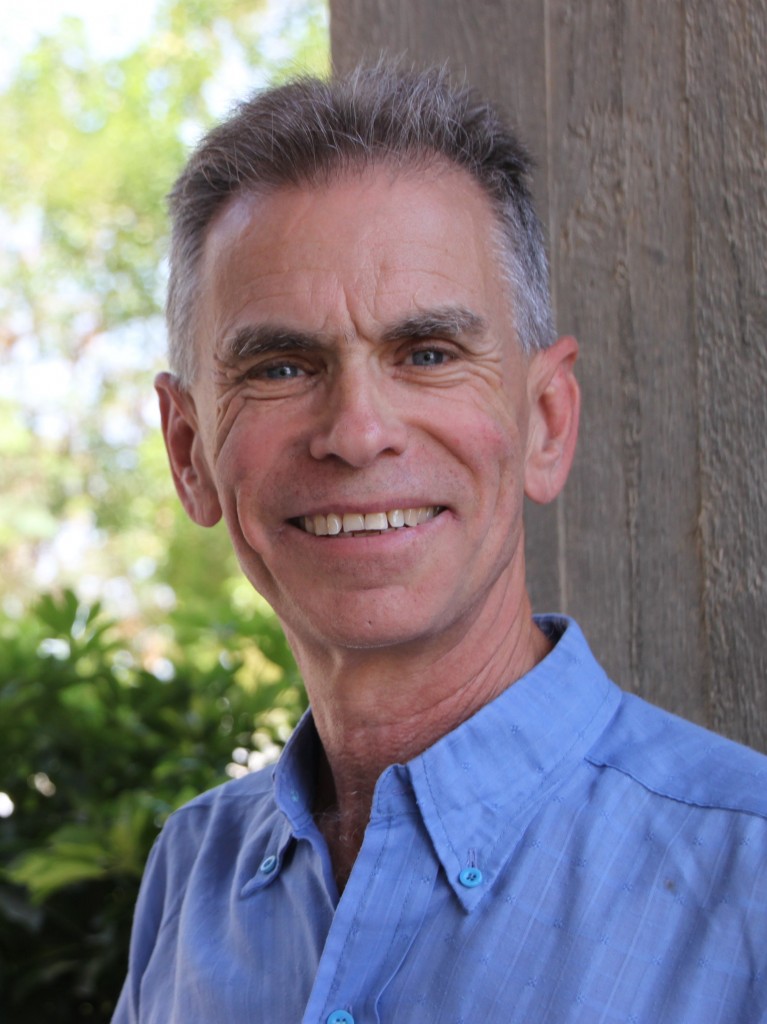 Nimrod Sheinman, BSc, ND, is an integrative naturopathic physician and one of Israel’s most experienced and well-respected mind-body authorities. He is a graduate of NCNM (1986) and was a Bastyr resident and faculty member (1986-1987) before returning to Israel. He founded Israel’s Naturopathic Association (1993) and served as its president during its first 4 years. Dr Sheinman co-founded Israel’s Center for Mind-Body Medicine (1998). He was the director of the mind-body unit in the Integrative Oncology department at Rabin Medical Center, and is the current director of Israel’s Center for Mindfulness in Education (2013). In the past 30 years, Dr Sheinman has taught seminars around the world on Mind-Body Medicine, Imagery-based Therapy, and Mindfulness Perspectives in Clinical Practice. He is the author of Food for Thought, and Imagery-based Therapy for Clinical Practice, and is the co-editor of Potentiating Health and the Crisis of the Immune System. Since 1988, Dr Sheinman was Dean of Naturopathic Education for various colleges of natural medicine in Israel, and served on various government committees regarding the regulation of natural medicine in Israel. He lives in Israel with his wife and two kids, and can be reached at [email protected].
Nimrod Sheinman, BSc, ND, is an integrative naturopathic physician and one of Israel’s most experienced and well-respected mind-body authorities. He is a graduate of NCNM (1986) and was a Bastyr resident and faculty member (1986-1987) before returning to Israel. He founded Israel’s Naturopathic Association (1993) and served as its president during its first 4 years. Dr Sheinman co-founded Israel’s Center for Mind-Body Medicine (1998). He was the director of the mind-body unit in the Integrative Oncology department at Rabin Medical Center, and is the current director of Israel’s Center for Mindfulness in Education (2013). In the past 30 years, Dr Sheinman has taught seminars around the world on Mind-Body Medicine, Imagery-based Therapy, and Mindfulness Perspectives in Clinical Practice. He is the author of Food for Thought, and Imagery-based Therapy for Clinical Practice, and is the co-editor of Potentiating Health and the Crisis of the Immune System. Since 1988, Dr Sheinman was Dean of Naturopathic Education for various colleges of natural medicine in Israel, and served on various government committees regarding the regulation of natural medicine in Israel. He lives in Israel with his wife and two kids, and can be reached at [email protected].
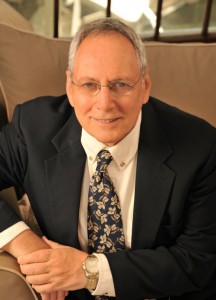 Paul Epstein, ND, is a mind-body therapist, mindfulness meditation teacher, speaker, workshop leader, and author. He graduated from NCNM in 1984, where he also directed the clinical lifestyle change program “Healthstyles.” He has successfully advocated and integrated the clinical application of mind-body medicine, mindful awareness and contemplative body-centered psychotherapy for 30 years. Paul co-founded the Israel Center for Mind-Body Medicine. He graduated from the Academy for Guided Imagery, completed the 3-year training program for Community Dharma Meditation Leaders at the Spirit Rock Meditation Center, and has trained in the “Internal Family Systems” model of psychotherapy. He practices in Westport, CT, where he also founded the Insight Meditation Community of Fairfield County. Dr Epstein has taught mindful healing workshops worldwide, has lectured at many conferences, and has taught classes at NCNM, Bastyr University, CCNM, OAND and UB. He mentors healthcare professionals to integrate mindfulness and mind-body therapy. He is author of the book, Happiness Through Meditation, and has several other articles available. Website: www.drpaulepstein.com; email: [email protected]; phone: (203) 722-2358.
Paul Epstein, ND, is a mind-body therapist, mindfulness meditation teacher, speaker, workshop leader, and author. He graduated from NCNM in 1984, where he also directed the clinical lifestyle change program “Healthstyles.” He has successfully advocated and integrated the clinical application of mind-body medicine, mindful awareness and contemplative body-centered psychotherapy for 30 years. Paul co-founded the Israel Center for Mind-Body Medicine. He graduated from the Academy for Guided Imagery, completed the 3-year training program for Community Dharma Meditation Leaders at the Spirit Rock Meditation Center, and has trained in the “Internal Family Systems” model of psychotherapy. He practices in Westport, CT, where he also founded the Insight Meditation Community of Fairfield County. Dr Epstein has taught mindful healing workshops worldwide, has lectured at many conferences, and has taught classes at NCNM, Bastyr University, CCNM, OAND and UB. He mentors healthcare professionals to integrate mindfulness and mind-body therapy. He is author of the book, Happiness Through Meditation, and has several other articles available. Website: www.drpaulepstein.com; email: [email protected]; phone: (203) 722-2358.
References:
- Lust B. A Personal Introduction by the Original Publisher. In: Williams H. A Home Course in Mental Science. London, England: Cornerstone Publishing; 2005. Available at: http://tinyurl.com/l28qsqv. Accessed March 15, 2015.
- Pelletier KR. Mind as Healer, Mind as Slayer. New York, NY: Dell Publication; 1977.
- Pelletier KR. Mind-body health: research, clinical, and policy applications. Am J Health Promot. 1992;6(5):345-358.
- Harrington A. The Cure Within: A History of Mind-Body Medicine. New York, NY: WW Norton & Company; 2008.
- Gilbert MD. Weaving medicine back together: mind-body medicine in the twenty-first century. J Altern Complement Med. 2003;9(4):563-570.
- Harrington A. The Placebo Effect: An Interdisciplinary Exploration. Cambridge, MA: Harvard University Press; 1997.
- Moerman DE, Jonas WB. Deconstructing the placebo effect and finding the meaning response. Ann Intern Med. 2002;136(6):471-476.
- Benson H, Freidman R. Harnessing the power of the placebo effect and renaming it “remembered wellness”. Annu Rev Med. 1996;47:193-199.
- Walach H, Ferrari ML, Sauer S, Kohls N. Mind-Body Practices in Integrative Medicine. Religions. 2012;3(1):50-81.
- Lindlahr H. Philosophy of Natural Therapeutics. Kent, England: The Maidstone Osteopathic Clinic; 1919. (Edited and revised by Proby, JCP; 1975)
- Jacobs GD. The physiology of mind-body interactions: the stress response and the relaxation response. J Altern Complement Med. 2001;7 Suppl 1:S83-S92.
- Moore M., Brown D, Money N, Bates M. Mind-Body Skills for Regulating the Autonomic Nervous System. June, 2011. Defense Centers of Excellence for Psychological Health and Traumatic Brain Injury Web site. http://tinyurl.com/m4b3ewo. Accessed March 15, 2015.
- Astin JA, Shapiro SL, Eisenberg DM, Forys KL. Mind-body medicine: state of the science, implication for practice. J Am Board Fam Pract. 2003;16(2):131-147.
- Siegel D. The Mindful Brain. New York, NY: W. W. Norton & Company; 2007.
- Grossman P, Niemann L, Schmidt S, Walach H. Mindfulness-based stress reduction and health benefits – a meta-analysis. J Psychosom Res. 2004;57(1):35-43.
- Samuelson M, Foret M, Baim M, et al. Exploring the effectiveness of a comprehensive mind-body intervention for medical symptom relief. J Altern Complement Med. 2010;16(2):187-192.
- LeShan L. Cancer as a Turning Point: A Handbook for People with Cancer, Their Families, and Health Professionals. New York, NY: Penguin Schwartz; 1990.
- Schwartz RC. Internal Family Systems Therapy. New York, NY: Guilford Press; 1995.
- Jonas WB, Chez RA. Toward optimal healing environments in health care. J Altern Complement Med. 2004;10 Suppl 1:S1-S6.
- Barasch MI. The Healing Path: A Soul Approach to Illness. New York, NY: Tarcher; 1994.
- Gordon JS. Holistic medicine: toward a new medical model. J Clin Psychiatry. 1981;42(3):114-119.
- Kornfield J. A Path with Heart. New York, NY: Bantam; 1993.
- Caspi O. Activating the Healing Response. In: Rakel D, ed. Integrative Medicine. Philadelphia, FL: Sounders Elsevier; 2007.
- Ferrucci P. What We May Be. Los Angeles, CA: Tarcher; 1982.
- Mulkins AL, Verhoef MJ.Supporting the transformative process: experiences of cancer patients receiving integrative care. Integr Cancer Ther. 2004;3(3):230-237.
- Creech A. The heart of the mind-body experience. NDNR. 2012;8(6):1-4.
- Cannon WB. The Wisdom of the Body. New York, NY: Norton; 1932. (Reprinted 1963).
- Selye H. The Stress of Life. 2nd ed. New York, NY: McGraw-Hill;
- Ross A, Thomas S. The health benefits of yoga and exercise: a review of comparison studies. J Altern Complement Med. 2010;16(1):3-12.
- Manocha R, Black D, Wison L. Quality of Life and Functional Health Status of Long-Term Meditators. Evid Based Complement Alternat Med. 2012;2012:350674. Available at: http://www.hindawi.com/journals/ecam/2012/350674/. Accessed March 15, 2015.
- Stress in America: Our Health at Risk. January 11, 2012. American Psychological Association.APA Web site. https://www.apa.org/news/press/releases/stress/2011/final-2011.pdf. Accessed March 15, 2015.
- The World Health Report 2001 – Mental Health: New Understanding, New Hope. World Health Organization. WHO Web site. http://www.who.int/whr/2001/en/. Accessed March 15, 2015.
- Wilkinson R, Marmot M, eds. Social Determinants of Health: The Solid Facts. 2nd ed. WHO Web site. http://www.euro.who.int/__data/assets/pdf_file/0005/98438/e81384.pdf. Accessed March 15, 2015.
- Thoits PA. Stress and health: major findings and policy implications. J Health Soc Behav. 2010;51 Suppl:S41-S53. Available at: http://hsb.sagepub.com/content/51/1_suppl/S41. Accessed March 15, 2015.
- Lanius, RA, Vermeten E, Pain C, eds. The Impact of Early Life Trauma on Health and Disease – The Hidden Epidemic. New York, NY: Cambridge University Press; 2010.
- Van der Kolk B, D’andrea W. Towards a Developmental Trauma Disorder Diagnosis for Childhood Interpersonal Trauma. In: Lanius RA, Vermeten E, Pain C, eds. The Impact of Early Life Trauma on Health and Disease: The Hidden Epidemic. New York, NY: Cambridge University Press; 2010.
- Felitti VJ, Anda RF, Nordenberg D, et al. Relationship of childhood abuse and household dysfunction to many of the leading causes of death in adults: the Adverse Childhood Experiences (ACE) Study. Am J Prev Med. 1998;14(4):245-258.
- Gilligan S. The Courage to Love: Principles and Practices of Self-Relations Psychotherapy. New York, NY: WW Norton & Company; 1997.
- Little S. Mind-Body Medicine. In Kligler B, Lee R, eds: Integrative Medicine: Principles for Practice. New York, NY: Mc Graw-Hill; 2004.
- Menninger WW. Caring as part of health care. 1975;234(8):836-837.
- Peabody FW. The Care of the Patient. JAMA. 1927;88(12):877-882.
- Borrell-Carrio F, Suchman AL, Epstein RM. The bio-psycho-social model 25 years later: principles, practice, and scientific inquiry. Ann Fam Med. 2004;2(6):576-582.
- Mind-Body Medicine: An Overview. Updated August, 2005. National Center for Complementary and Alternative Medicine. Available at: http://www.qigonginstitute.org/html/papers/NCCAMmindbody.pdf. Accessed March 15, 2015.
- Remen RN, Remen N. The Human Patient. New York, NY: Anchor Books; 1980.
- Antonovsky A. Health, Stress and Coping. San Francisco, CA: Jossey-Bass Publishers; 1979.
- Antonovsky A. Unraveling the Mystery of Health: How People Manage Stress and Stay Well. San Francisco, CA: Josey Bass Publishers; 1987.
- Rakel D, Jonas WB. Creating optimal healing environments. In: Rakel D, ed. Integrative Medicine. Philadelphia, PA: Saunders Elsevier: 2007.
- Dossy L. (1998). Personal communication.
- Cassel EJ. The nature of suffering and the goals of medicine. N Engl J Med. 1982;306(11):639-645.
- Remen RN. Practicing a medicine of the whole person: an opportunity for healing. Hematol Oncol Clin North Am. 2008;22(4):767-773.
- Egnew TR. The meaning of healing: transcending suffering. Ann Fam Med. 2005;3(3):255-262.
- Remen RN. A Revolution in Health Care. July 1, 1999. Lion’s Roar: Buddhist Wisdom for Our Time. Available at: http://www.lionsroar.com/a-revolution-in-healthcare. Accessed March 15, 2015.




